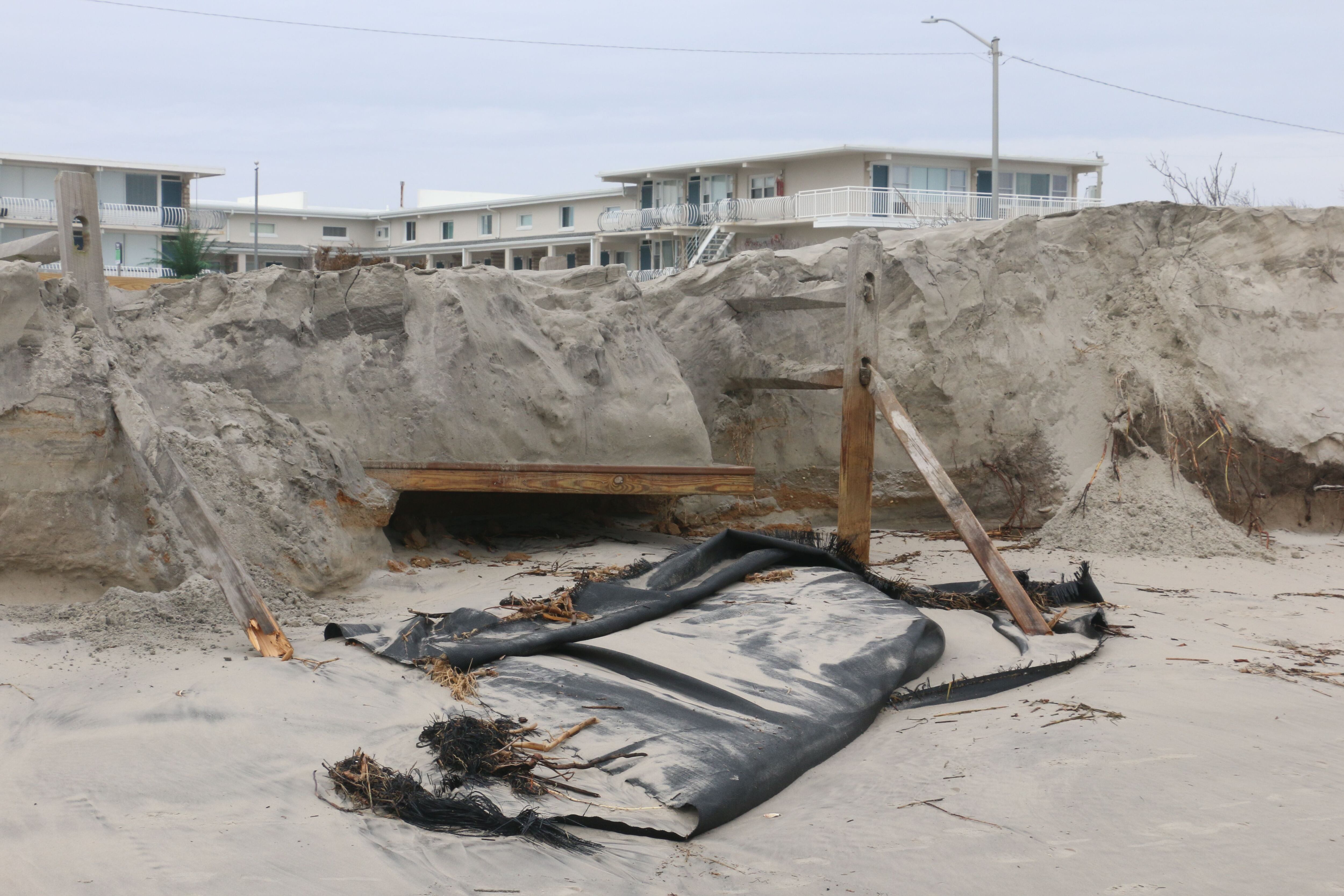A recent nor’easter that brushed the coast last week caused significant beach erosion in shore communities south of Long Beach Island in New Jersey. State investigators have reported that this nor’easter led to the worst sand losses experienced along the Jersey Shore, prompting officials to assess the cost of beach replenishment efforts.
The weekend storm brought heavy rain, moderate to severe flooding, and strong ocean swells fueled by astronomical tides and gusts exceeding 50 mph. From southern Ocean County to Cape May County, the shoreline experienced moderate to major erosion, resulting in the formation of steep sand cliffs known as “scarping” where higher dunes were eroded by rising waters.
In Monmouth County, notable beach erosion was observed south of the Manasquan Inlet. The New Jersey Department of Environmental Protection highlighted significant sloped erosion and exposed coastal protection structures in various areas due to the combined impacts of recent storms and the nor’easter.
U.S. Rep. Jeff Van Drew, representing the Jersey Shore, is working with the Army Corps of Engineers to coordinate a response to the sand loss. Officials are still assessing the damage, with a focus on areas like Bay Head, Mantoloking, Seaside Park, Beach Haven, Holgate, Brigantine, Atlantic City, and Strathmere.
Some of the most alarming sand loss occurred in Strathmere, where significant erosion has been ongoing since the last large-scale replenishment effort. Upper Township officials are relying on the dune system to protect the shoreline, but new areas where the dunes were lost to the ocean have been documented.
Assemblyman Antwan McClellan urged caution in Strathmere and emphasized the need for a long-term solution to protect property owners, visitors, and the natural habitat. The community is working with federal, state, and local partners to develop strategies that ensure the safety and preservation of the coastal areas for future generations.


